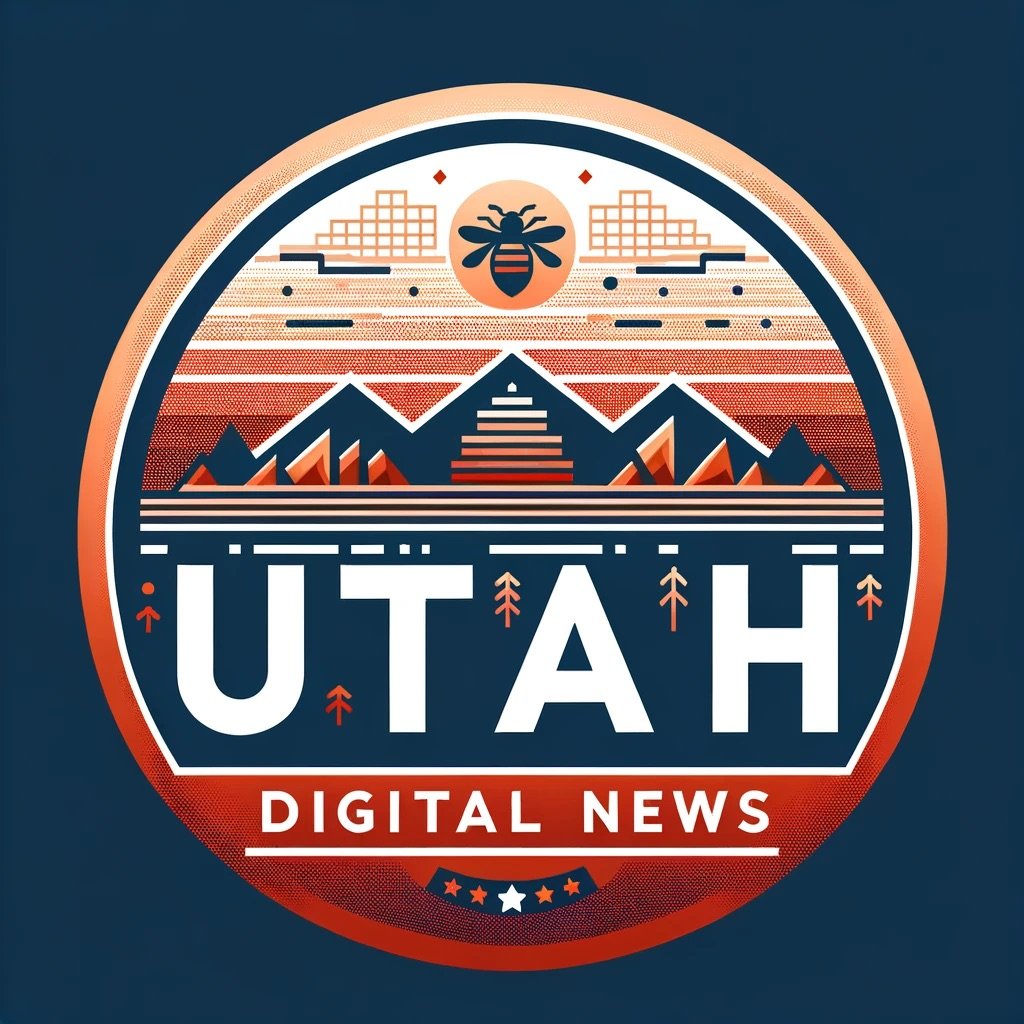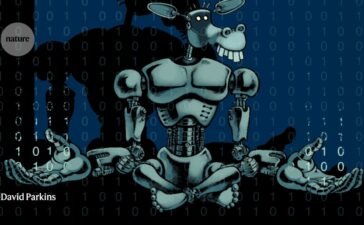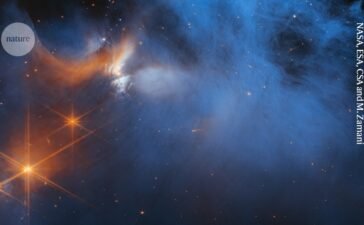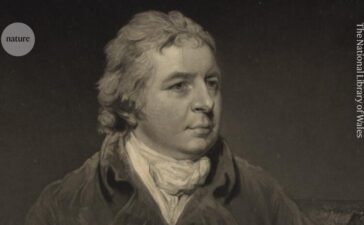Why female students at an inner London school are seeing scientists in a different light
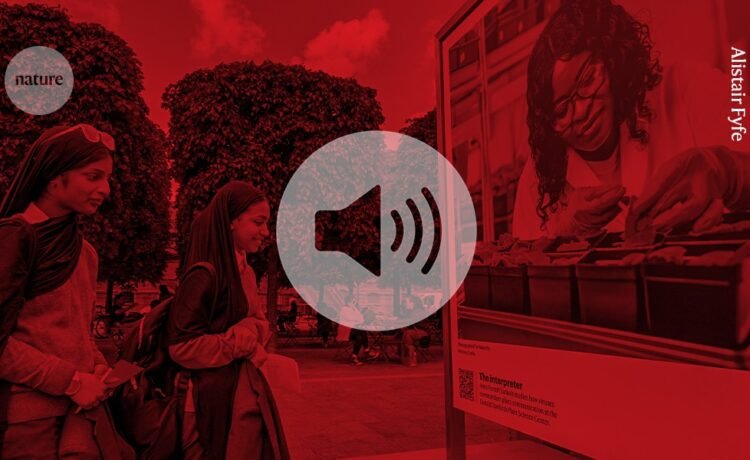
Julie Gould 00:04
Hello, and welcome to the Nature Careers podcast. I’m Julie Gould. In this episode, we’re doing something a little different…
Female pupil: 00:11
I drew like a person that has, that looks crazy.
Female pupil: 00:13
A flask of like, kind of green liquid.
Female pupil: 00:16
It’s all females and males
Female pupil: 00:17
It looks like a scientist because she has a lab coat.
Female pupil: 00:20
That you can make your hobby and your job combined together.
Female pupil: 00:23
I would never think they were scientists.
Julie Gould 00:30
In 2019, Nature Careers started a new section of the magazine called Where I Work. It’s a beautiful series of photographs depicting scientists in their natural habitat. Being curious about the world in different locations.
Jack Leeming, a Nature Careers editor, tells us a bit more.
Jack Leeming: 00:47
It aims to celebrate the diversity of scientists, and the diversity of the sort of work that they do within science as well.
It’s this big, beautiful piece of photography of an individual scientist, along with just a brief explanation of what they’re up to, what they’re doing in the photograph and, and what they do day-to-day.
Julie Gould 01:06
Why is it important to show this sort of diversity?
Jack Leeming: 01:09
My colleague Kelly Krause, who runs the art team here at Nature, put it really, really well the other day when she said you can’t be what you can’t see.
Julie Gould 01:19
This quote was originally from Marian Wright Edelman, the founder and president of the Children’s Defence Fund. And she said it during a documentary about the visibility of women in positions of power.
Jack Leeming: 01:29
I think what she means by that is that we’d really like to show off that scientists aren’t all wacky lab-coated, round-goggled people from Back to the Future. They’re more diverse than that. They’re more interesting than that. And they’ve got more range than that.
And whilst you know, being a wacky, round-goggled lab-coated Back to the Future scientist is fun and interesting, and no one’s saying that’s wrong, I feel like perceptions of scientists need to change.
We need to be a little bit more open minded about all the different things that scientists do, and all the different things that scientists are.
Julie Gould 02:08
Clearly whilst on the back page of a print copy of Nature, or on their website, these photos are only really seen by those of us who are already firm believers that the world of science is diverse.
So this year Nature Careers collaborated with the Kings Cross outdoor exhibition space as part of earth month to bring these photographs to a bigger audience.
Jack Leeming: 2:28
So it’s a really nice opportunity to put all of these beautiful pieces of photography in front of a different audience to the normal Nature audience. You know, a person who’s picking up the book in nature isn’t necessarily going to be walking past to get a train in Kings Cross. But everyone who’s walking to King’s Cross is now going to see these wonderful photographs.
The reason we think it’s important is because showing off that diversity is something we really care about. And showing it to the public, not just scientists, not just preaching to the converted, showing it to everyone, what different scientists can be, it’s really important to us, and we’re really excited to be a part of it.
Julie Gould 03:03
Now I’m very grateful to the Nature Careers team too, because I got to be a part of it as well, I took a day trip up to London Kings Cross to have a look at the exhibit, and to meet with a group of 12-13 year old girls from the Elizabeth Garrett Anderson School in Kings Cross, who we’re going to explore it with me.
But I decided to turn our trip into a little experiment based on a much bigger experiment. This experiment is called the Draw a Scientist Test.
And it’s fundamentally what it says on the tin. Get people to draw a scientist and have a look at the results. Here’s David Miller from the American Institutes for Research to tell us more,
David Miller: 03:40
You ask a group of children to draw a scientist. And then after the children draw the picture of a scientist, the researcher goes in, takes a look at that, and systematically codes different features of what the children depicted.
Julie Gould 03:58
David’s main interest in this research is on the gender of the scientists that are depicted within these drawings.
But there is a much more comprehensive checklist that looks at a lot of different features of the drawings.
David Miller: 04:09
Such as, is the scientist wearing eyeglasses, or lab coats? Does he or she appear to be working indoors? Is the scientist working alone? Or is the scientist working in collaboration with other people?
You know, these kinds of different features that beyond just a male are scientists are these stereotypical notions of what a scientist does.
Julie Gould 04:36
So I wanted to take the opportunity to see what this particular group of girls from the Elizabeth Garrett Anderson school thought a scientist would look like. I gave the girls a very simple prompt.
Your teacher is going to give you each a piece of paper and pencil. And I’m gonna give you about five minutes or so, to just draw a picture of what you think a scientist looks like.
Whilst the girls take a minute to figure out what they’re drawing, here’s their science teacher, Asha Mohamed. I spoke to her about what the girls at the school commonly think a scientist is.
Asha Mohamed 05:09
Their idea about scientists is a bit skewed to be honest. They just think it’s like you work in a lab. And a lot of times they are males.
And a lot of the times, when they think about scientists, they just think about a doctor, a teacher, maybe a nurse, but not what actually it entails to be a scientist.
So their view is a bit narrow at the moment, but hopefully, as they progress (they are only in year eight), as they progress, they’ll have more of an understanding.
Julie Gould 05:35
So let’s hear what the girls drew.
Female pupil: 05:36
I’ve just drawn a woman who’s holding like a flask of, like, kind of green liquid.
And like on the table next to her there’s, like, a Bunsen burner and a tripod.
Female pupil: 05:44
I drew a scientist with very frizzy hair because an explosion happens.
Female pupil: 05:53
So I just drew a random, you know, lady, once again coming from…
Female pupil: 05:58
I just drew a scientist with test tubes and, like, experiments, because that’s what I imagine them doing.
Female pupil: 06:04
I drew like a person that looks crazy.
Female pupil: 06:07
I think scientists are females and males and, like, they have, like, safety goggles, and laboratory coats. They have like, they have to have good safety precautions.
Female pupil: 06:18
We usually associate a scientist with, like, mixing chemicals, creating explosions, that kind of thing.
Julie Gould 06:23
David says that this selection of drawings of scientists inside, in a lab coat wearing goggles and surrounded by chemicals, is representative of what children see.
David Miller 06:33
If you look in children’s media depictions of scientists. It’s often of the chemists that are working in a lab, have beakers, lab equipment.
Julie Gould: 06:49
Now, does anybody have an idea of why they think that that was their original thought of what a scientist is? Or does? Why was that?
Female pupil: 06:58
It’s usually because in movies, the stereotypical scientist is always, like, some kind of mad scientist doing crazy experiments causing problems or like trying to find a solution to a problem. And they usually are always inside.
Female pupil: 07:10
I think no, but because I think the reason why they make it like that in movies is because it’s more like goofy and it helps to like better the storyline. It makes it like a more funny character.
David Miller 07:18
Think of some famous scientists that children might learn about, you might think of Einstein, Newton who were physicists.
But still, if you think about what are the typical pictorial representations of Einstein. Einstein is often in a lab coat himself, which is kind of interesting.
Did he wear lab coats that often when he was alive? Not really, but often the pictorial representations do show him in that.
Julie Gould: 07:54
I had another theory.
But when you do science at school, where do you do your science? And what do you wear? Goggles? Yeah, so this is what you do in science.
And I realized this is also reflective of the science I did in secondary school. We were mostly in a lab and we wore a lab coat, irrespective of whether it was a chemistry, physics or biology lesson.
And these were often accompanied by safety goggles as well. The workbenches had gas taps on them that connected to the Bunsen burners, which were available and on display in all the labs.
Then when it came to the teachers, the biology and chemistry teachers at least always had a lab coat on when we were in the lesson.
If you get back to “you can’t be what you can’t see”, as Jack mentioned earlier, if your closest experience with science at school is in a lab with safety equipment playing with chemicals, then that’s what you’ll draw, isn’t it?
David Miller 08:48
That idea is well-reflected within social psychological theories, right? That the direct observations that you see people engaging in the tasks and in this case the children themselves, forms a pretty strong direct connection to the images that you can see of those scientists.
Julie Gould 09:17
Okay, so here comes the second part of the experiment. We take the girls to see the Where I Work photos, and see what they think.
But also, if at the end, whether their perceptions and of course drawings of scientists would look any different?
And funnily enough, the first photo that the girls started looking at seemed very familiar to them.
Julie Gould: 09:44
What are we looking at over here?
Female pupil: 09:49
She looks like a scientist because she has a lab coat.
Julie Gould: 09:51
She looks like a scientist because she has a lab coat.
Female pupil: 09:52
…and she’s wearing gloves, protective equipment.
Julie Gould 09:55
Protective equipment, okay? Could you read out what it says to me at the bottom of this picture?
Female pupil: 09:59
Biotechnologist Sara Abdou explores the genetics that regulate colour in ornamental flowers.
Julie Gould: 10:06
Okay. What can we see?
Female pupil: 10:10
The flowers? Is she like, making sure the colours stay in the flowers?
Female pupil: 10:20
Is she like, in a greenhouse, like greenhouse space? Lots of containers.
Julie Gould 10:25
As well as looking at the working environment, I wanted to know what the girls thought of the person in the photo.
Female pupil: 10:33
She looks productive. (What does that mean?) She looks like she’s working really hard. (Does she look like she’s enjoying what she’s doing). Yeah. (Okay)
Julie Gould: 10:43
Is this the kind of person when we were drawing pictures of scientists earlier? Is this the kind of person you would imagine?
Female pupil: 10:52
Yeah, a bit. Just like not what she was doing. Like not like with plants, kind of.
Julie Gould 10:56
Familiarity was also found in another photo of Richmond Sarpong.
Female pupil: 11:00
Richmond Sarpong uses a nitrogen-filled glovebox to conduct hazardous experiments.
Okay. Oh, wait, I think we have this in school, kind of. It’s called a fume box.
Julie Gould: 11:14
So is this the sort of image you have of a scientist, with all the safety equipment?
Female pupil: 11:20
Yeah, I drew like I drew like an actual fume box but without the gloves. I didn’t have gloves.
Julie Gould: 11:26
This was in contrast to a photo of Cliff Kapono.
Female pupil: 11:30
A surfer.
Female pupil: 11:33
Analytical chemist and avid surfer Cliff Kapano takes to his board to study the health of coral reefs off the coast of Hawaii.
Julie Gould: 11:43
So what do we think? Tell me, tell me your initial thoughts about this photograph?
Female pupil: 11:47
I would never think there were a scientist. (Why is that?) Because they are a surfer. (You don’t think people can be both?)
I never thought of it at first but maybe,
Female pupil: 11:55
It shows that you can make your hobby and your like, job, like combined together. I can’t really tell if he’s a scientist or not. But the, I know that is a rod and it makes him look like he’s up to, like, up to work.
Julie Gould 12:10
We also looked at geologists. Tell me about the picture.
Female pupil: 12:13
I feel like I can tell he’s a scientist. But there’s like a lot of jobs where you can be mining that stone. Yeah, I think because you’re being saved by wearing a helmet but I think it’d be better by protecting his hands.
Julie Gould: 12 25
And laser physicist….
Female pupil: 12:28
The celestial physicist. Experimental physicist Sheila Rowan works with laser beams and suspended mirrors to sharpen detection of collapsing stars and other celestial events.
Julie Gould; 12:36
And what do we think of the picture?
Female pupil: 12:40
Already it looks such it feels like a nice place to work. Could you feel like you’re in a movie? Welcome to like high tech equipment. You feel like a really great, like, scientist.
Female pupil: 12:51
I don’t know. The workplace just looks so good. So you’ve got the equipment, and then you have the mood lighting? It’s all colourful.
Julie Gould 12:58
Okay. And what about the person? What about the person that we’re looking at?
Female pupil: 13:02
Person? Um? I’d say she looks like, well suited to her job. She looks like she kind of knows what she’s doing. And kind of she doesn’t seem surprised by surroundings, I guess.
Julie Gould: 13:13
After spending 20 minutes wandering around and discussing the photographs, we reconvened. And I asked the girls to have another go at drawing a scientist. Here’s a little insight into what they drew the second time around.
Female pupil: 13:23
But then, as I saw the pictures and also, like, reading about it, I realized that it’s not just men and it’s women. And I do like, her and have flowers and stuff.
Julie Gould: 13:38
You’ve got a speech bubble there as well. What does that say?
Female pupil: 13:40
Help the world.
Julie Gould 13:42
Help the world. Okay. Now I’m looking at this picture here. And I don’t see just one person compared to what you had before?
Female pupil: 13:50
So before I had just one woman in a lab coat with glasses. But on my second drawing, I drew like, the whole earth with a bunch of people around it showing that anyone can be a scientist like male or female, like no matter your age.
And there’s also, I also drew like symbols for like different parts of science you can go into. Like, you can work with nature, you can work with space, you can work with like ocean and marine animals, and like the weather and crystals and a lot of different things.
Julie Gould: 14:18
Tell me about yours before and after.
Female pupil:14:21
Before my scientist was kind of like in the lab, mainly it was focused on, like, chemicals and fire.
Julie Gould: 14:23
And what is she saying?
Female pupil: 14:24
And she can’t, she said that she made a mistake in her experiment that it’s mostly she’s doing experiments. But my second picture is mostly focused on, like, environment and nature after I saw the pictures of the exhibition,
Female pupil: 14:43
And, like, compared to the one that we drew before, which was both women like in the lab doing with the conical flask. It’s really different because he’s outside. He’s doing a lot of like dirty work, digging stuff out. It’s more like manual labour.
Julie Gould: 14:55
Their stereotypical images from earlier in the day are still so commonly drawn by children and young teenagers. And I imagine that if that’s the kind of image that they have in their heads of scientists, solitary inside a lab wearing safety equipment, that it may deter young people, particularly women, from pursuing a career as a scientist.
This is why David Miller says it’s still so important to make sure that young people and particularly women are able to see that scientists are a diverse group of people doing a diverse group of things.
David Miller: 15:26
We know that even if children know that a female scientist could be a scientist, if the default stereotype is a male scientist that works alone, indoors, is nerdy, that can have an impact in terms of who goes into these fields, that it can make girls and women feel like, “I don’t belong in that field.”,
That stereotype can have a real impact on children’s future goals and aspirations. And that’s why that is important.
Julie Gould: 16:10
I asked the girls what they learned from the exhibit too.
Female pupil: 16:14
I learned that, like, typically what they all do, like scientists in lab coats, but around the exhibit, people are just in like their normal outdoor clothes.
Like in the one where the guy was looking at the plants. And he was just wearing these normal clothes that you’d wear outside casually. And it shows like you can literally work from anywhere when you’re a scientist. You can literally do it right now by looking at the grass. Seeing what colour it is,
Female pupil: 16:41
I thought that most men were scientists, but when I was seeing that most of those were women.
Julie Gould: 16:47
So scientists, here’s a call to action. Share your love for science with the people around you by showing them how and where you work. Whether you’re able to visit a school or share photos of your location on social media, it’s important to keep building up that picture of diversity and science so that more and more young people begin to learn what these girls learn.
Female pupil: 17:08
You know, the stereotypes of like a scientist often that like a man was, like crazy. How a scientist can be like, literally anyone a scientist could look, quote unquote, completely normal.
You can be a scientist in almost any part of the world, like in different categories, whatever you could, you could be involved with flowers, with the ocean, with weather, with space. You can do anything.
Julie Gould: 17:28
Thanks for listening. I’m Julie Gould.




